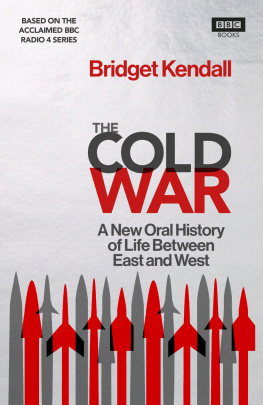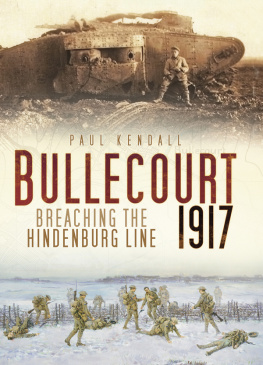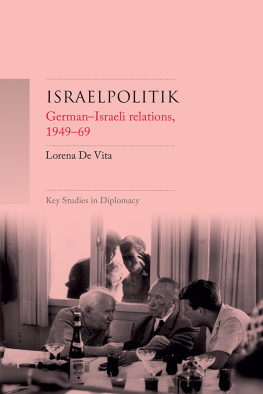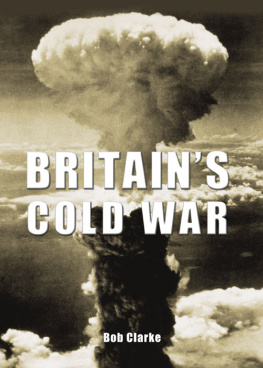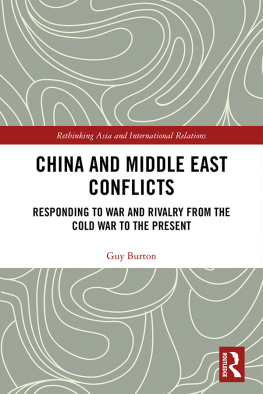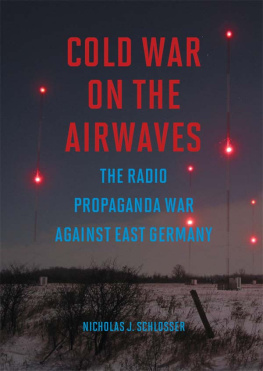Contents
About the Book
Accompanying a landmark BBC Radio 4 series, The Cold War is essential reading for anyone seeking to understand how the tensions of the last century have shaped the modern world, and what it was like to live through them.
The Cold War is one of the furthest-reaching and longest-lasting conflicts in modern history. It spanned the globe from Greece to China, Hungary to Cuba and lasted for almost half a century. It has shaped political relations to this day, drawing new physical and ideological boundaries between East and West.
In this meticulously researched account, Bridget Kendall explores the Cold War through the eyes of those who experienced it first-hand. Alongside in-depth analysis that explains the historical and political context, the book draws on exclusive interviews with individuals who lived through the conflicts key events, offering a variety of perspectives that reveal how the Cold War was experienced by ordinary people. From pilots making food drops during the Berlin Blockade and Japanese fishermen affected by H-bomb testing to families fleeing the Korean War and children whose parents were victims of McCarthys Red Scare, The Cold War covers the full geographical and historical reach of the conflict.
About the Author
Bridget Kendall was the BBCs foreign correspondent in Moscow during the collapse of the Soviet Union, then Washington correspondent and diplomatic correspondent. She is now the first female master of Peterhouse, Cambridge Universitys oldest college.
Phil Tinline and Martin Williams are the producers of the landmark BBC Radio 4 series Cold War: Stories from the Big Freeze.
Introduction
I shall never forget the August morning in 1991, when I was stationed in the Soviet Union as BBC Moscow correspondent, and was woken early by the BBC news desk to check out a statement that had just turned up on TASS, the Soviet state news agency. It declared that the Soviet President, Mikhail Gorbachev, had been taken ill and a state of emergency imposed. By mid-morning there were tanks rumbling through the citys main thoroughfares, taking up positions on bridges and around the Kremlin walls, and it was clear that an attempt to seize power was under way by Soviet hard-liners who feared that Gorbachevs reforms had given too much power away.
What I remember is the extraordinary reaction of local people. Many of them were incredulous, both nervous and yet remarkably unafraid. Our elderly cleaning lady, Masha, made her way out on to the street outside the office, still in her apron and headscarf, and began to scold the soldiers who emerged from the turrets of the tanks, which they had parked on the verge.
What are you doing here? she rebuked them. You should be ashamed of yourself! Go home to your mothers where you belong!
Within three days the coup plotters lost their nerve and their attempt to seize power collapsed.
It was one of the most vividly memorable episodes of my life. So much hung in the balance. If this coup by the old guard had succeeded, it would have reinstated Soviet power, reasserted the primacy of the Communist Party and returned the world to a new freeze. Some people find worrying echoes of Cold War antagonism in the more recent mistrustful stand-off between Russia and the West. But if those coup plotters had managed to turn back the clock in August 1991, Cold War tensions would never have abated at all, and we might now be living in a very different world.
I was fortunate to be there at that theatrical turning point. It was a privilege to be a BBC news correspondent reporting from Moscow at that time, a moment of global history in the making. But the events of late 1991 represented only one final scene in a geopolitical drama that spanned the globe and endured for nearly half a century.
Everyone who can count themselves as one of the Cold War generation probably has some searing experience associated with that strange, strained era, which veered from clandestine conspiracies and political brinkmanship to vicious blood-letting and agonising, cataclysmic wars. For those untouched by the devastating proxy clashes and spasms of brutal repression, the Cold War was often a backdrop, neither war nor peace but something running dimly in the background, hidden in twilight hues, in between. But for everyone who lived through those years there were some moments when the magnitude of the conflict loomed out of the shadows and its dramas took centre stage.
Beginning in 1944, even before the Second World War had ended, and lasting until the Soviet Union collapsed at the end of 1991, the Cold War lasted for well over four decades. The initial spotlight was on Europe, but within a few years it had spread to Asia. In time, countries as far apart as Vietnam, Chile and Angola were all caught up in its web.
The tensions that developed into the Cold War grew out of the Second World War and the question of what to do with the war-wrecked lands vacated by the retreating German armed forces. Once the menace of Hitler had been overcome, the wartime alliance between the United States and Britain on the one hand and the Soviet Union on the other began to unravel. Attempts by the Allied powers to agree on a post-war division dominated several summits, starting with the Tehran conference in 1943, Winston Churchills private meeting with Joseph Stalin in Moscow in October 1944 and the so-called Percentages Agreement it produced, the Yalta conference of February 1945 and, five months later, another three-way summit in Potsdam. But the diplomacy only went so far.
Across Eastern Europe, Soviet troops were moving in and Communist takeovers were swiftly following. The Soviets were keen to take advantage of this opportunity to spread their Communist ideology westwards. They also wanted to make Eastern Europe a buffer zone to protect themselves against any future incursions from Germany or any other part of Europe.
Western powers, alarmed by the speed with which the Soviets were occupying territory, began to coalesce around a series of policies to contain the advance. The Truman Doctrine of 1947 sought to counter the expansion of Soviet geopolitical influence. The Marshall Plan poured billions of dollars of American aid into Western Europe to rebuild it after the war. The NATO military alliance followed in 1949, a collective defence pact to act as a counterweight to the threat posed by Soviet armies stationed in Eastern Europe. Within a few short years of the end of the Second World War, Europe once again found itself to be a conflict zone, not this time for a fighting war, but as the central focus of an ideological and political split, with the divided city of Berlin at its heart. And instead of Britain, France and Germany dominating the continents diplomatic chessboard, now the leading powers facing each other across the divide were the United States and the Soviet Union.
From 1949, the Cold War spread further round the globe with the emergence of another Communist giant Mao Zedongs Red China. The disclosure, that same year, that the Soviet Union had acquired atomic weapons, and the start of the Korean War in 1950, brought tensions to a new peak. Revelations of Soviet espionage and fears of infiltration whipped up an anti-Communist crusade in the United States. Strident anti-capitalist rhetoric and paranoia about all things Western accompanied a new wave of Stalinist repression inside the Soviet Union, while in Eastern Europe new Communist regimes set about murdering and jailing their enemies. And even though the death of the Soviet leader Joseph Stalin in 1953 brought hopes of a thaw and better EastWest relations, that did not last. The violent suppression of an uprising in Hungary in 1956 and a crisis over the stationing of Soviet missiles in Cuba in 1962 served as reminders that the world was staring into an abyss, caught between two global systems that viewed each other as mortal enemies and which could all too easily slip into nuclear war.

